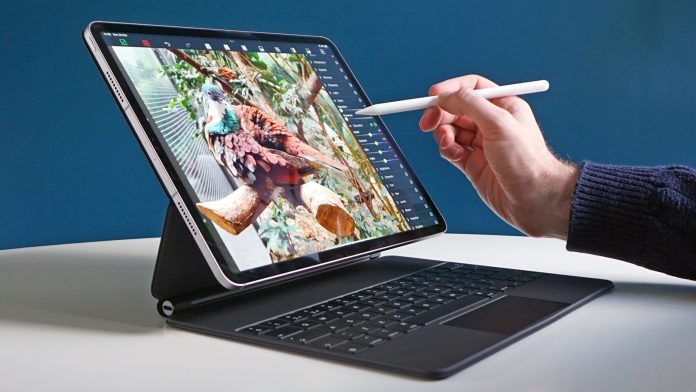Apple’s next batch of iPad Pro tablets, which are expected next year, could be the most expensive yet, thanks to the inclusion of a rumored display upgrade.
Following on from the iPad Pro 12.9 (2022) and the smaller – but otherwise practically identical iPad Pro 11 (2022), Apple is expected to drop another two new iPad Pro models next year. When they launch we’ll likely see Apple’s best iPad tablets get a few upgrades in terms of their processor and feature set.
However, while hardware improvements are always welcome, reports are suggesting we might be a little disappointed about one update. Next year’s iPad’s OLED displays are being rumored to be a lot more expensive than the screens on the current models screens – and that means the 2024 iPads are likely to cost more too (via The Elec).
According to reports coming out of South Korea, where Apple’s display partners Samsung Display and LG Display are based, Apple is looking to use a two-stack design for its next-gen OLEDs, with two light-emitting layers rather than one. Two-stack displays are brighter and longer lasting than single-stack screens – but they also cost a lot more.
Currently, Apple’s iPad Pro displays cost an estimated $100-$150 to produce (around £80-£125 / AU$150-AU$225), but it’s reported that the cost of the new two-stack screens would jump to around $270 for the 11-inch model, and $350 for the 12.9-inch (around £225, £300 / AU$400, AU$520).
If those rumors are true, Apple will almost certainly look to pass some, if not all, of the extra cost onto consumers. So if you were planning to upgrade your tablet next year, you might want to start thinking about whether you’re really going to need the very latest and greatest iPad, or can perhaps make do with a slightly older and cheaper, but still solid option.

Analysis: Money for something
While we have to take any rumors with a pinch of salt, if the reports are true, the new iPad’s displays might actually be a worthwhile upgrade if you do choose to splash out.
Most OLED tablets aren’t bright enough to offer anything serious in the HDR department. Don’t get us wrong: the screens look great, but they aren’t delivering the full OLED effect; nothing like what you’d get from one of the best OLED TVs.
If Apple adopts this tandem structure, however, its screens should be a lot brighter than other OLED options on the market.
What’s more, the structure would give the screen a four-times longer lifespan. So if you’re someone that likes to buy a new iPad pro and then hold onto it for a few years, the 2024 models should be better equipped to deliver in that respect.
We’ll have to wait until 2024 to find out exactly what Apple’s next iPad Pro models have in store for us, but if the prices are set to go up then at least it looks like we’ll be getting more bang for the extra buck.


















